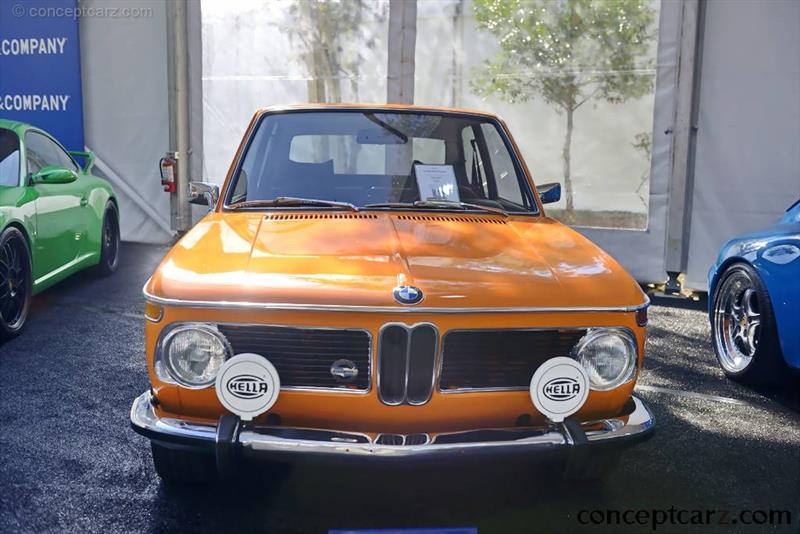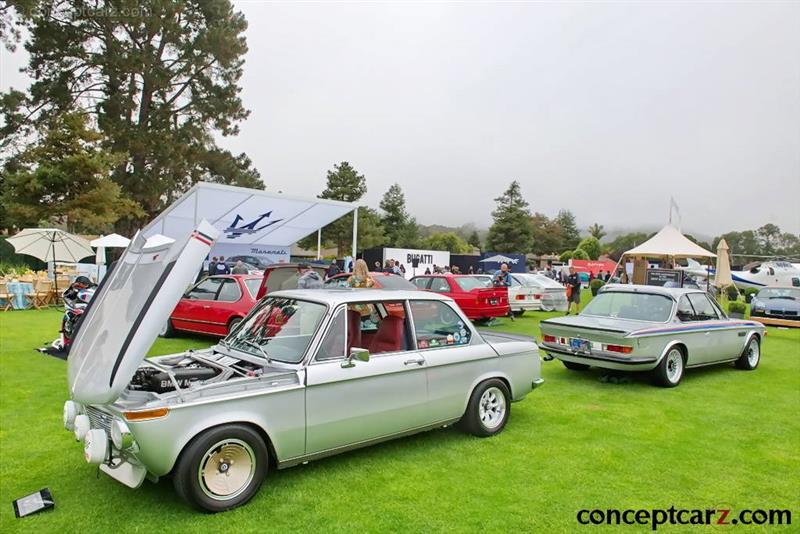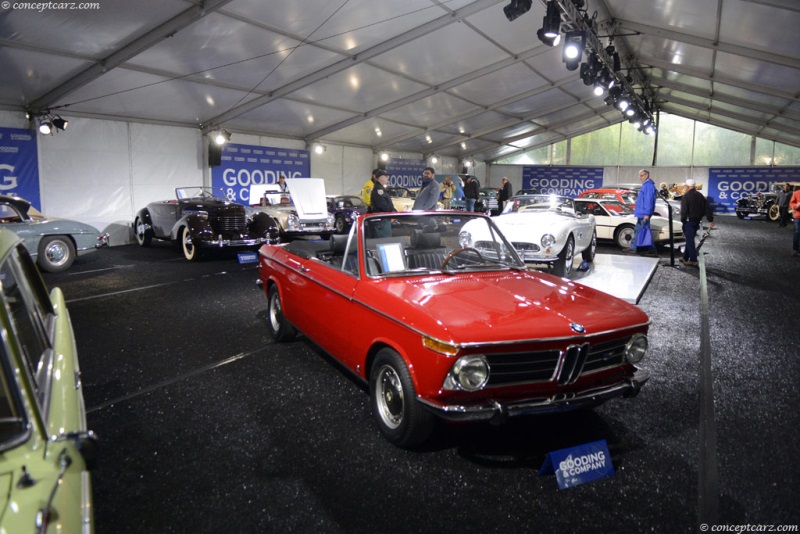BMW's path to success was sealed with the new two-door, medium-sized bodywork of the 1600 saloon of 1966, coupled with the tried-and-true overhead camshaft four-cylinder engine and MacPherson strut front and coil spring/trailing arm rear suspension. The formula was taken a step farther when allied to the new 02 Series and faster derivatives soon joined the 85bhp 1600. The first to join was the twin carburetor 105 horsepower 1600ti of 1967, followed by the 2002 launch in January of 1968. In basic form, the 1,998cc engine offered 100 horsepower; with twin carburetors in the 2002ti, output rose to 120 bhp and top speed to 115mph. It was with this model that BMW won the 2,000cc class of the 1968 European Touring Car Championship. As Porsche continued to threaten with its 911, BMW used the competition only 2002TiK for Group 5, K denoting a KKK turbocharger.
SedanThe 'Neue Klasse' four-cylinder sedans of the early 1960s returned the German company to profitability, with the designs spawning a growing model line that continued through the mid-1970s. The 2002, based on the 1600-2 (later renamed the 1602), was offered as a three-door touring (never sold in the United States) and two-door sedan body style. For those seeking an open-air 2002 experience, BMW obliged via subcontractor Karosserie Baur, which converted 200 cars to full-cabriolet form through 1971, followed by some 2,300 Targas. The BMW 1600 Cabriolet was unveiled in 1966 at the Geneva Motor Show, displaying many of the ingredients that would define the future models for the brand including a compact body, exciting performance, an elegant design, manufacturing excellence, and an interior welcoming four persons. Like so many cars that preceded it, the 2002 was the reported brainchild of Max Hoffman, a New York-based BMW importer who was seeking a sportier version of the 02 series that could be sold in the United States. Around the same time, both Helmut Werner Bönsch, BMW's director of product planning, and Alex von Falkenhausen, designer of the M10 engine, each had a larger two-liter engine installed in a 1600-2 for their respective personal use. With mutual interests, a joint proposal was submitted to BMW's board to manufacture a two-liter version of the 1600-2. The 2002 would join the BMW catalogue for 1968, offering a sportier and more tractable persona that was better able to meet tough US emissions regulations.Specification
The BMW 2002 was sold as a two-door coupe and three-door hatchback (touring) resting on a 98-inch wheelbase with an overall length of approximately 166 inches. It stood approximately 54 inches tall and was 63-inches wide. The 2.0-liter engine was offered in two states of tune including the single-carburetor version with 99 horsepower. With dual carburetors and higher compression, the 2002 ti offered 120 bhp. A four-speed manual transmission was standard, and the base engine configuration became available with a ZF 3HP12 3-speed automatic in 1969.
SedanThe 2002tii version received a state-of-the-art Kugelfischer mechanical fuel injection system which brought horsepower to 128 horsepower (130 PS / 96 kW) and top speed to 115 mph (185 km/h). Additionally, updates were made to strengthen the suspension and brakes. A 2002 tii Touring model was available throughout the run of the tii engine and the Touring body, both of which ended production in 1974.the first turbocharged BMW 2002s were entered in the 1969 European Touring Car Championship and, in the hands of Dieter Quester, won against stiff opposition from Porsche 911s and Alfa Romeo GTAs. The fuel-injected 2002tii provided the basis for the 2002 Turbo (E20) with its deep front air dam, wheel arch extensions, and distinctive boot-mounted spoiler. Produced in 1973 and 1974, the legendary 2002 Turbo was Europe's first turbocharged production car. BMW introduced the 2002 turbo in 1973 at the Frankfurt Motor Show. The 2002tii engine was paired with a twin-scroll 0.55 Bar turbocharger developed together with KK&K. Larger combustion chambers, a compression ratio of 6.9:1, and a modified cylinder head version of the '121TI' design helped boost output to 168 hp at 5,800 RPM and 177 lb-ft of torque. A version of the Kugelfischer mechanical fuel injection was used with an integrated boost enrichment feature and altitude compensation. Numerous mechanical modifications were needed to cope with the more potent engine including ventilated front brakes and 250mm sized rear drums that would later appear on the E21 3-SEries. A strengthened Getrag 232 4-speed, only used on the 2002 Turbo, or the Getrag 235/5 close-ratio 5 speed (optional on the 2002 tii) were paired with the engine and drove through a 3.36:1 limited slip differential to 5.5J13 steel wheels. A larger radiator and an oil cooler kept the critical components at optimal temperature during extreme exercise. On the inside, an extra gauge cluster was added for the boost gauge & clock plus a red instrument panel with 240kmh/150mph speedometer, sports steering wheel and seats. 
SedanThe BMW 2002 Turbo was distinguished by its color combinations and the extensive modifications made to the body. The two standard colors available were Chamonix (white) and Polaris (silver) paired with BMW motorsport color-scheme stripes/decals on the sides and front airdam. A unique front panel with additional two-bracket and air-intake apertures was added to the steel body along with wheel arches designed to accommodate wider wheels. The BMW 2002 Turbo's Achilles Heel was its poor timing, as it was introduced just prior to the onset of the oil crisis in 1973. It was built during an era when buyers were seeking fuel-sipping vehicles, and when poor MPG was viewed negatively by the public, ultimately hurting the company's image. Although performance was a staple of the company's foundation, BMW was focusing heavily on complying with safety and emission requirements in the United States and meeting the buyer demand for compact executive cars. Thus, the 2002 Turbo remained an exclusive halo car and is highly sought after by collectors in modern times. Production
The total production of the '02 Series' including the 1602, 2002, 1802, and 1502 was 837,038 units. The 2002 was produced from 1968 to 1975 with a total of 339,092 examples constructed. A total of 1,672 examples were the 2002 turbo which was in production from 1973 to 1975. The 2002 tii was built from 1971 to 1975 with 38,703 units constructed. The 2000 and 2002 Touring, built from 1971 to 1974, reach production figures of 15,969 units. The tii version of the 2000/2002 Touring (1971 to 1974) reached a total of 5,783 units constructed.The BMW 02 Series was a revolutionary model that helped shape the automotive landscape for small luxury sport coupes. Its elegant and tasteful design resonated with a youthful subset of professionals that recognized style, value, quality, and affordable performance.
by Daniel Vaughan | Jun 2022
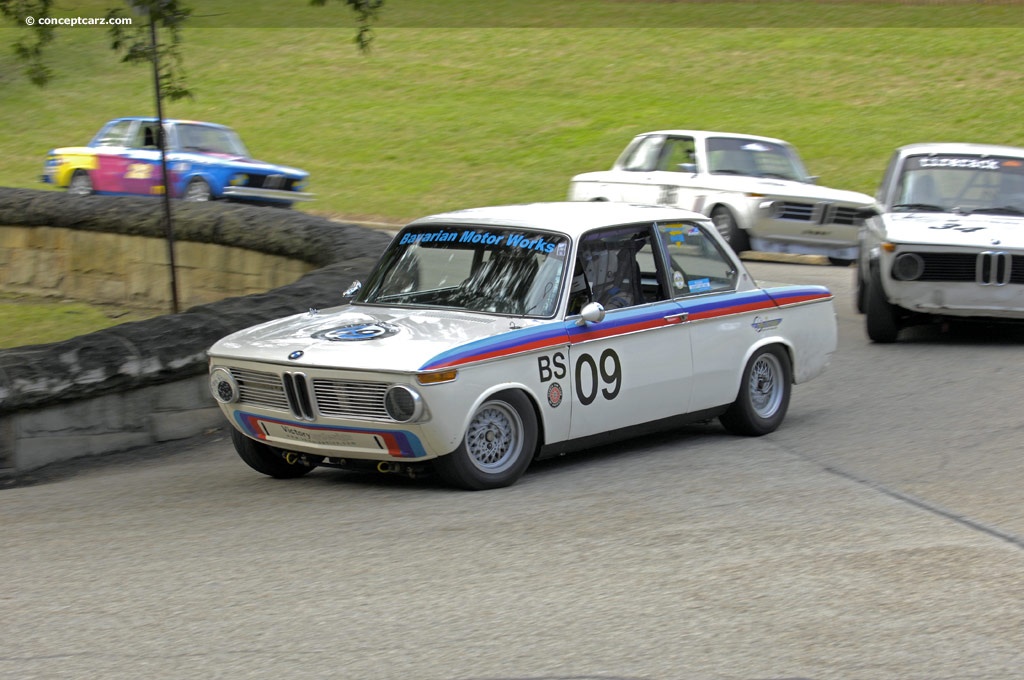
Sedan
The BMW 2002 was sold as a two-door coupe and three-door hatchback (touring) resting on a 98-inch wheelbase with an overall length of approximately 166 inches. It stood approximately 54 inches tall and was 63-inches wide. The 2.0-liter engine was offered in two states of tune including the single-carburetor version with 99 horsepower. With dual carburetors and higher compression, the 2002 ti offered 120 bhp. A four-speed manual transmission was standard, and the base engine configuration became available with a ZF 3HP12 3-speed automatic in 1969.
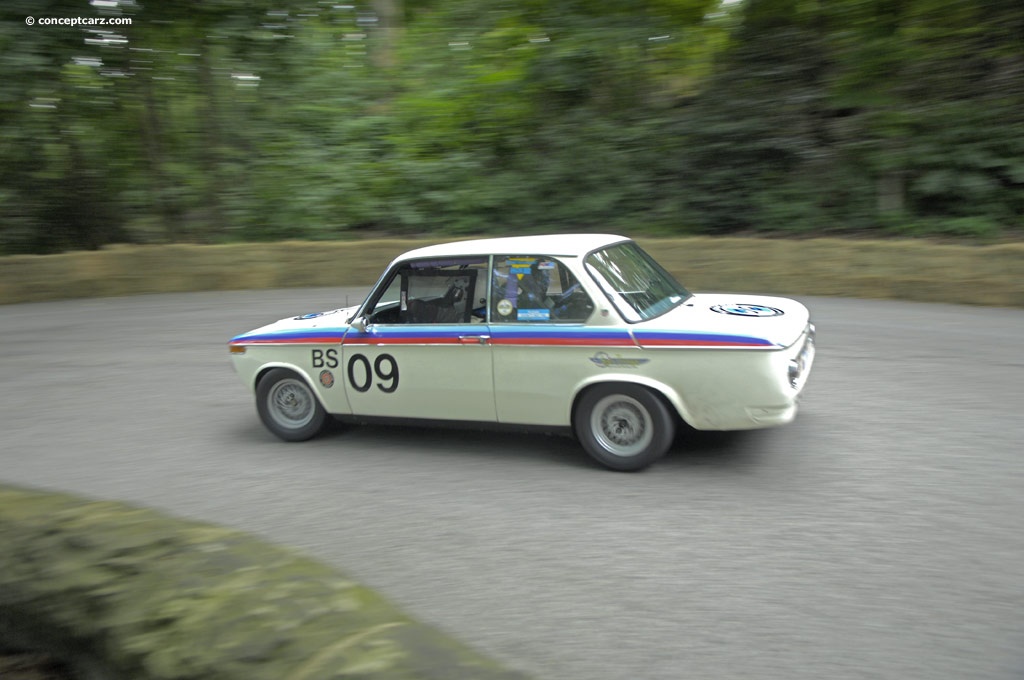
Sedan
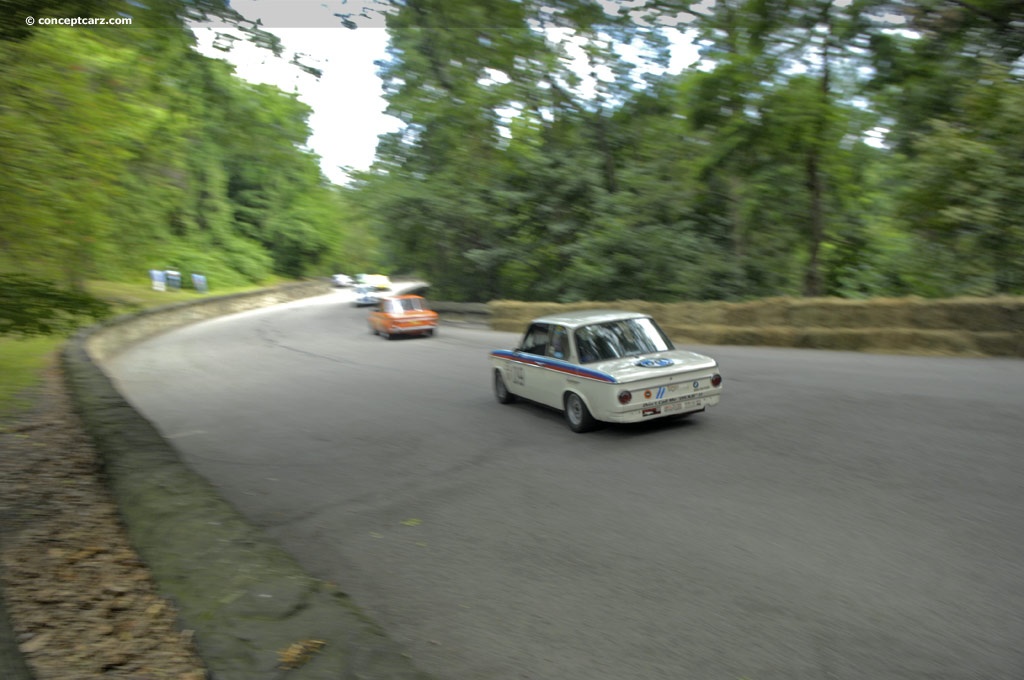
Sedan
The total production of the '02 Series' including the 1602, 2002, 1802, and 1502 was 837,038 units. The 2002 was produced from 1968 to 1975 with a total of 339,092 examples constructed. A total of 1,672 examples were the 2002 turbo which was in production from 1973 to 1975. The 2002 tii was built from 1971 to 1975 with 38,703 units constructed. The 2000 and 2002 Touring, built from 1971 to 1974, reach production figures of 15,969 units. The tii version of the 2000/2002 Touring (1971 to 1974) reached a total of 5,783 units constructed.The BMW 02 Series was a revolutionary model that helped shape the automotive landscape for small luxury sport coupes. Its elegant and tasteful design resonated with a youthful subset of professionals that recognized style, value, quality, and affordable performance.
by Daniel Vaughan | Jun 2022
Related Reading : BMW 2002 History
Those manufacturers that had found a niche in the marketplace to survive the Great Depression were forced once again to figure out how to stay in business after World War II. BMW stayed successful with their affordable and efficient bubble car, named the Isetta. They also produced luxury cars such as the 507 and aircraft parts. In 1959, BMW was on the brink of bankruptcy. Their Isetta vehicle had....
Continue Reading >>
Continue Reading >>
Similar Automakers
Similarly Sized Vehicles
from 1971
Similarly Priced Vehicles
Buick Skylark ($2,845-$3,520)
Triumph TR6 ($3,275-$3,275)
Ford Ranchero ($2,850-$3,275)
Dodge Challenger ($2,725-$3,270)
Dodge Charger ($2,710-$3,775)
Buick Gran Sport ($3,285-$3,476)
Mercury Cougar ($3,290-$3,875)
Plymouth Fury ($3,110-$4,145)
Ford Custom Series ($3,290-$3,980)
Average Auction Sale: $30,748
Triumph TR6 ($3,275-$3,275)
Ford Ranchero ($2,850-$3,275)
Dodge Challenger ($2,725-$3,270)
Dodge Charger ($2,710-$3,775)
Buick Gran Sport ($3,285-$3,476)
Mercury Cougar ($3,290-$3,875)
Plymouth Fury ($3,110-$4,145)
Ford Custom Series ($3,290-$3,980)
Average Auction Sale: $30,748
1971 BMW 2002 Vehicle Profiles
Recent Vehicle Additions
Performance and Specification Comparison
Price Comparison
$5,000 - $8,090
2002 Generation 2 Specification Comparison by Year
Year
Production
Wheelbase
Engine
Prices
98.40 in.
4 cyl., 121.44 CID., 99.00hp
4 cyl., 121.00 CID., 140.00hp
4 cyl., 121.44 CID., 147.00hp
4 cyl., 121.00 CID., 140.00hp
4 cyl., 121.44 CID., 147.00hp
$3,280 - $3,280
Related Automotive News

2024 BMW X5 and X6 World Premiere at The Amelia
Unveiling of the new 2024 X5 and X6, including PHEV and M Competition versions.
BMW Classic celebrating of 50 years of the 3.0 CSL Batmobile.
The only 1960 BMW 507 Sport Series II on display.
BMW.Williams FW22 Formula One race car featured in t...

Renault Announces UK Pricing And Specifcation For All-New Megane R.S.
All-New Mégane R.S. is priced from £27,495 on the road (OTR) 4Control – Renaults advanced four-wheel-steer system – available on a hot hatch for the first time Available with choice of Sport or Cup chassis Optional Efficient Dual Cl...

2017 JAGUAR XE DEBUTS IN LOS ANGELES WITH AWD AND APPLE WATCH CONNECTIVITY
- Award-winning Jaguar XE sports sedan to arrive in U.S. Jaguar showrooms Spring 2016
- Lineup to include Jaguar XE 20d, 25t and 35t models selectively available in XE, XE Premium, XE Prestige and XE R-Sport trims
- All models offered in rear-wheel drive...

ALL-NEW FORD FOCUS RS MAKES GLOBAL AUTO SHOW DEBUT; PIONEERS INNOVATIVE AWD AND PERFORMANCE TECHNOLOGIES
Fords all-new Focus RS makes global show debut in Geneva introduces advanced performance technologies to deliver the ultimate fun-to-drive experience
Third-generation Focus RS pioneers innovative Ford Performance All-Wheel-Drive with Dynamic Torq...

2014 BUICK REGAL BOASTS MORE POWER, GREATER EFFICIENCY
DETROIT – The revamped 2014 Buick Regal now arriving in dealerships features the sport sedans most powerful standard engine ever – and increased fuel efficiency.
Producing an SAE-rated 259 horsepower and 295 lb-ft of torque from just two liters...




























